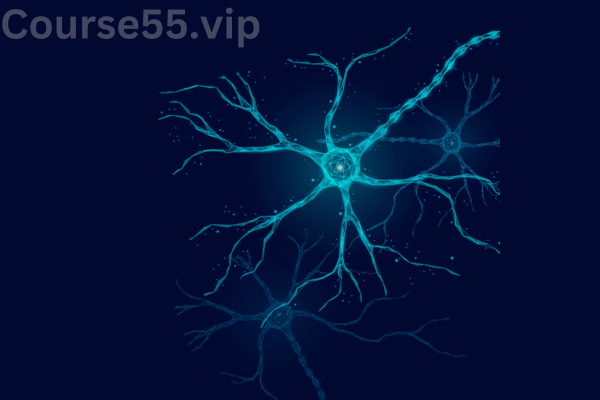-
×
 Couples on the Brink: When Is Enough Enough? By Terry Real - PESI
1 × $23.10
Couples on the Brink: When Is Enough Enough? By Terry Real - PESI
1 × $23.10 -
×
 Self-Regulation & Executive Functioning in Children and Adolescents: Visual Strategies and Hands-on Techniques to Provide Structure, Predictability, and Routines By Kathy Morris
1 × $23.10
Self-Regulation & Executive Functioning in Children and Adolescents: Visual Strategies and Hands-on Techniques to Provide Structure, Predictability, and Routines By Kathy Morris
1 × $23.10 -
×
 Ten Best-Ever Anxiety Treatment Techniques By Margaret Wehrenberg - PESI
1 × $23.10
Ten Best-Ever Anxiety Treatment Techniques By Margaret Wehrenberg - PESI
1 × $23.10 -
×
 Legal Issues in Behavioral Health Maryland: Legal and Ethical Considerations By Lois Fenner - PESI
1 × $23.10
Legal Issues in Behavioral Health Maryland: Legal and Ethical Considerations By Lois Fenner - PESI
1 × $23.10 -
×
 Understanding the Needs of the Dying: Bringing Hope, Comfort and Love to Life's Final Chapter By David Kessler - PESI
1 × $23.10
Understanding the Needs of the Dying: Bringing Hope, Comfort and Love to Life's Final Chapter By David Kessler - PESI
1 × $23.10 -
×
 Writing Email Copy for B2B Companies By AWAI
1 × $23.10
Writing Email Copy for B2B Companies By AWAI
1 × $23.10 -
×
 Using EMDR Across the Lifespan By Robert Tinker - PESI
1 × $23.10
Using EMDR Across the Lifespan By Robert Tinker - PESI
1 × $23.10
Expert Strategies for Working with Traumatic Memory By Peter Levine, Pat Ogden & Bessel van Der Kolk – NICABM
$197.00 Original price was: $197.00.$23.10Current price is: $23.10.
SKU: C55vip.11429mVAEZJGQ
Category: Download
Tags: Expert Strategies for Working, Pat Ogden & Bessel van Der Kolk - NICABM, Peter Levine, with Traumatic Memory
Expert Strategies for Working with Traumatic Memory – Digital Download!
Expert Strategies for Working with Traumatic Memory By Peter Levine, Pat Ogden & Bessel van Der Kolk – NICABM
Overview

Expert Strategies for Working with Traumatic Memory: A Holistic Approach to Healing
Navigating the complexities of traumatic memory presents a significant challenge in therapeutic practice. Expert Strategies for Working with Traumatic Memory, featuring insights from renowned specialists Peter Levine, Pat Ogden, and Bessel van der Kolk, provides an invaluable resource for professionals aiming to enhance their trauma therapy skills. This program explores the intricate relationship between trauma, memory processing, bodily responses, and healing strategies. Below, we examine the key approaches presented by these experts and how they can be integrated into clinical practice for improved therapeutic outcomes.
Understanding Trauma Through the Body’s Perspective
Peter Levine, the founder of Somatic Experiencing, emphasizes that trauma is fundamentally connected to the body’s physiological responses. He explains that trauma affects not only memory but also an individual’s ability to self-regulate. According to Levine, a body-centered approach is essential for reprocessing traumatic experiences and facilitating healing.
Key Insights from Peter Levine:
- Enhancing Body Awareness: Helping clients reconnect with their physical sensations fosters a deeper understanding of their emotional and physiological reactions to trauma.
- Restoring Regulation: Trauma disrupts the body’s natural ability to maintain balance, leading to confusion and helplessness. Therapy should focus on re-establishing this regulation for emotional and psychological stability.
Levine’s approach is particularly beneficial for clients who struggle with verbalizing their experiences. By incorporating body awareness techniques, therapists can create a bridge to deeper trauma processing, allowing clients to engage in healing without relying solely on verbal communication.
Movement as a Pathway to Trauma Recovery
Pat Ogden, a pioneer in Somatic Psychology, underscores the significance of movement in trauma healing. She asserts that integrating physical activity into therapy can help clients unlearn ingrained traumatic responses that have become embedded in their bodies.
Core Techniques from Pat Ogden:
- Body-Oriented Approaches: Gentle movement exercises, mindfulness practices, and expressive arts can enhance body awareness and facilitate emotional healing.
- Facilitating Emotional Integration: Engaging in physical movement allows clients to process emotions and reshape their traumatic narratives in a more empowering way.
Ogden’s strategies provide therapists with practical tools to help clients reconnect with their bodies, fostering a sense of safety and grounding. By acknowledging that trauma is not just a psychological condition but an embodied experience, therapists can create interventions that promote holistic healing.
The Impact of Trauma on Memory Processing
Bessel van der Kolk, a leading expert in trauma and psychiatry, explores the complex relationship between trauma and memory. His research highlights how trauma fundamentally alters brain function, affecting how memories are stored and recalled. He cautions that traditional talk therapy may have limitations for trauma survivors, as it often neglects the physiological and emotional dimensions of trauma.
Highlighted Insights from Bessel van der Kolk:
- Brain-Body Connection: Trauma can cause memory fragmentation or dissociation, making it difficult for individuals to recall events coherently or process them without distress.
- Holistic Treatment Approaches: Effective trauma therapy should integrate both verbal and non-verbal communication, addressing physiological responses alongside cognitive processing.
By recognizing the interplay between mind and body, van der Kolk encourages therapists to adopt techniques that extend beyond verbal dialogue. This approach fosters deeper healing and long-term recovery.
Practical Strategies for Trauma Therapy
The program provides actionable strategies for addressing trauma in therapy, with a particular focus on recognizing dissociation and maintaining client engagement.
Key Practical Techniques:
- Identifying Dissociation: Therapists learn to recognize when clients are disengaging or experiencing trauma-related dissociation, allowing for immediate intervention.
- Encouraging Grounding Techniques: Keeping clients connected to bodily sensations helps anchor them in the present, reducing overwhelming trauma responses.
By employing these strategies, clinicians can navigate sensitive trauma-related moments effectively, ensuring that clients feel safe and supported throughout the therapeutic process.
The Role of Non-Verbal Communication in Therapy
A recurring theme among the experts is the importance of integrating verbal communication with non-verbal cues in trauma therapy. Body language often conveys emotions and experiences that words cannot fully capture, making it an essential component of effective trauma work.
Essential Takeaways:
- Interpreting Body Language: Therapists should be attuned to clients’ non-verbal expressions, as these can reveal critical insights into their trauma experiences.
- Combining Verbal and Non-Verbal Techniques: Encouraging both spoken reflection and physical engagement allows clients to process trauma on multiple levels, enhancing therapeutic outcomes.
This dual approach ensures that clients’ experiences are validated in a way that acknowledges both their cognitive and physiological realities.
Movement-Based Interventions in Trauma Therapy
Movement-based interventions provide an effective means for clients to release stored trauma and reconnect with their bodies. The experts highlight several practical movement exercises that can be incorporated into therapy.
Examples of Therapeutic Movements:
- Mindful Walking: Engaging in mindful walking promotes grounding and bodily awareness, helping clients feel more present.
- Dance Therapy: Expressive movement such as dance can serve as an outlet for emotional release, providing a supportive framework for trauma processing.
By incorporating movement into therapeutic sessions, practitioners create additional pathways for clients to work through trauma, ultimately fostering greater emotional resilience.
Conclusion
Expert Strategies for Working with Traumatic Memory provides a comprehensive framework for therapists seeking to deepen their understanding of trauma treatment. Drawing from the insights of Peter Levine, Pat Ogden, and Bessel van der Kolk, the program highlights the importance of integrating body awareness, movement, and emotional regulation into therapy.
By emphasizing a holistic approach to trauma healing, this training equips therapists with the tools necessary to support clients in reprocessing traumatic experiences. The fusion of body-based interventions, cognitive techniques, and practical applications ensures that therapy addresses the full scope of trauma’s impact. In a world where trauma is increasingly recognized as a pervasive issue, these expert-driven strategies offer hope and transformative potential for both therapists and clients.
Frequently Asked Questions:
Business Model Innovation: We operate a group buying strategy, allowing participants to share costs and access popular courses at reduced prices. This model benefits individuals with limited financial resources, despite concerns from content creators about distribution methods.
Legal Considerations: The legality of our operations involves complex issues. Although we don’t have explicit permission from course creators to resell their content, there are no specific resale restrictions stated at the time of purchase. This ambiguity creates an opportunity for us to provide affordable educational resources.
Quality Control: We ensure that all course materials purchased are identical to those offered directly by the creators. However, it’s important to understand that we are not official providers. As such, our offerings do not include:
– Live coaching calls or sessions with the course author.
– Access to exclusive author-controlled groups or portals.
– Membership in private forums.
– Direct email support from the author or their team.
We aim to reduce the cost barrier in education by offering these courses independently, without the premium services available through official channels. We appreciate your understanding of our unique approach.
Be the first to review “Expert Strategies for Working with Traumatic Memory By Peter Levine, Pat Ogden & Bessel van Der Kolk – NICABM” Cancel reply
You must be logged in to post a review.














Reviews
There are no reviews yet.